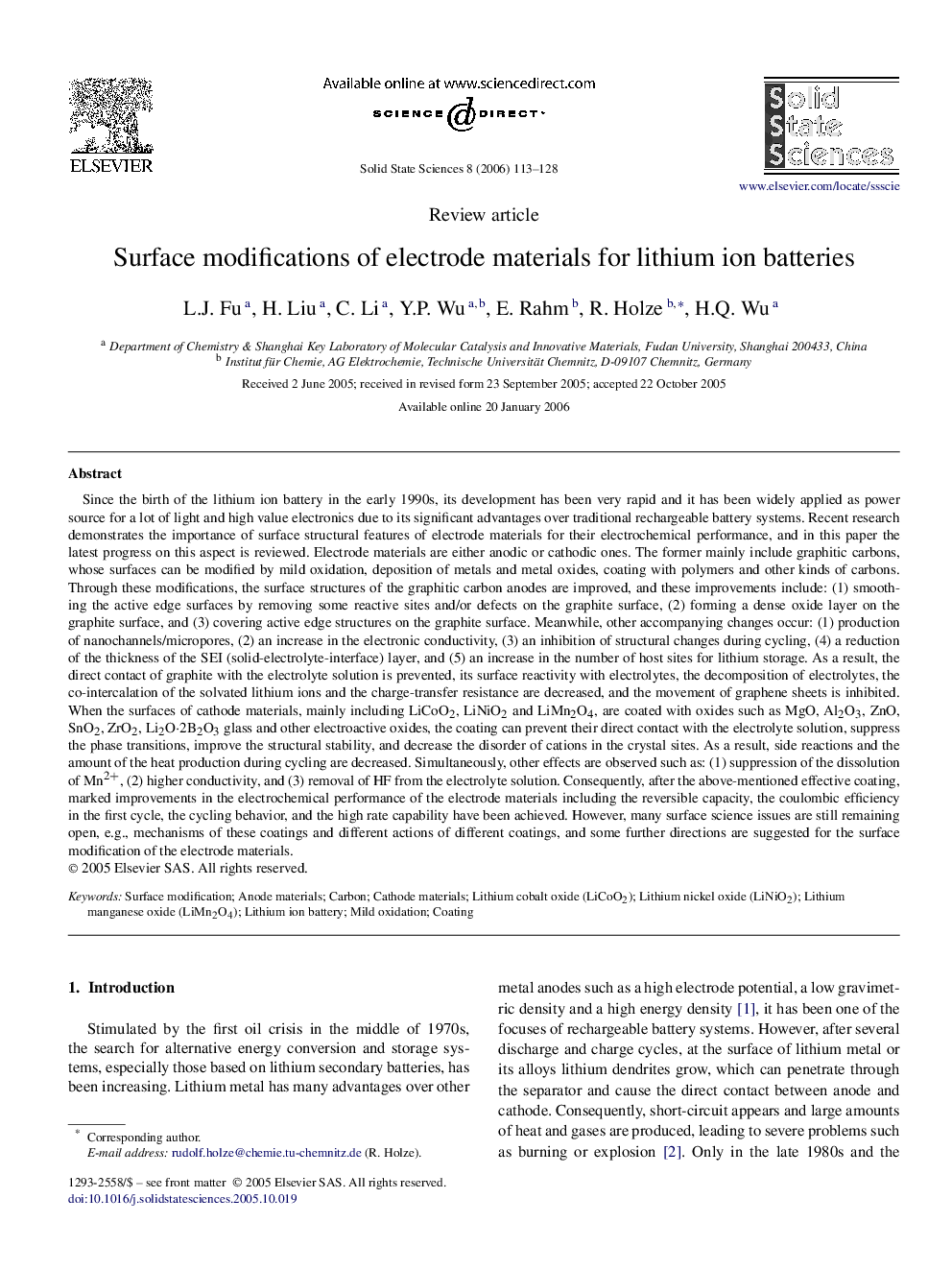| کد مقاله | کد نشریه | سال انتشار | مقاله انگلیسی | نسخه تمام متن |
|---|---|---|---|---|
| 1507006 | 993818 | 2006 | 16 صفحه PDF | دانلود رایگان |

Since the birth of the lithium ion battery in the early 1990s, its development has been very rapid and it has been widely applied as power source for a lot of light and high value electronics due to its significant advantages over traditional rechargeable battery systems. Recent research demonstrates the importance of surface structural features of electrode materials for their electrochemical performance, and in this paper the latest progress on this aspect is reviewed. Electrode materials are either anodic or cathodic ones. The former mainly include graphitic carbons, whose surfaces can be modified by mild oxidation, deposition of metals and metal oxides, coating with polymers and other kinds of carbons. Through these modifications, the surface structures of the graphitic carbon anodes are improved, and these improvements include: (1) smoothing the active edge surfaces by removing some reactive sites and/or defects on the graphite surface, (2) forming a dense oxide layer on the graphite surface, and (3) covering active edge structures on the graphite surface. Meanwhile, other accompanying changes occur: (1) production of nanochannels/micropores, (2) an increase in the electronic conductivity, (3) an inhibition of structural changes during cycling, (4) a reduction of the thickness of the SEI (solid-electrolyte-interface) layer, and (5) an increase in the number of host sites for lithium storage. As a result, the direct contact of graphite with the electrolyte solution is prevented, its surface reactivity with electrolytes, the decomposition of electrolytes, the co-intercalation of the solvated lithium ions and the charge-transfer resistance are decreased, and the movement of graphene sheets is inhibited. When the surfaces of cathode materials, mainly including LiCoO2, LiNiO2 and LiMn2O4, are coated with oxides such as MgO, Al2O3, ZnO, SnO2, ZrO2, Li2O⋅2B2O3 glass and other electroactive oxides, the coating can prevent their direct contact with the electrolyte solution, suppress the phase transitions, improve the structural stability, and decrease the disorder of cations in the crystal sites. As a result, side reactions and the amount of the heat production during cycling are decreased. Simultaneously, other effects are observed such as: (1) suppression of the dissolution of Mn2+, (2) higher conductivity, and (3) removal of HF from the electrolyte solution. Consequently, after the above-mentioned effective coating, marked improvements in the electrochemical performance of the electrode materials including the reversible capacity, the coulombic efficiency in the first cycle, the cycling behavior, and the high rate capability have been achieved. However, many surface science issues are still remaining open, e.g., mechanisms of these coatings and different actions of different coatings, and some further directions are suggested for the surface modification of the electrode materials.
Figure optionsDownload as PowerPoint slide
Journal: Solid State Sciences - Volume 8, Issue 2, February 2006, Pages 113–128